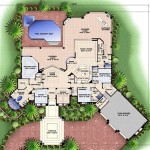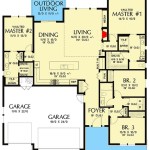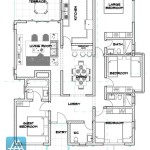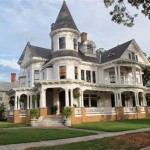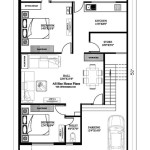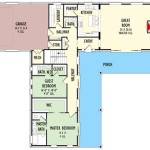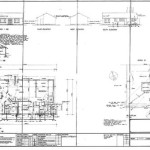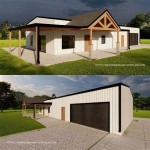Pacific Northwest Style Home Plans: Defining Characteristics and Design Considerations
Pacific Northwest style home plans reflect the unique environmental context of the region, characterized by abundant forests, rugged coastlines, and frequent rainfall. This architectural style emphasizes natural materials, connection to the outdoors, and a functional design that embraces the surrounding landscape. A deep understanding of these core tenets is crucial for anyone seeking to design or build a home that truly embodies the Pacific Northwest aesthetic.
Key Elements of Pacific Northwest Architecture
Several defining elements contribute to the distinct character of Pacific Northwest homes. These elements are not merely decorative; they are integral to the functionality and aesthetic appeal of the style, reflecting the climate and available resources.
Natural Materials: The use of natural materials is paramount. Timber, particularly cedar, fir, and hemlock, is prevalent in both structural elements and exterior cladding. Stone, sourced locally whenever possible, is frequently incorporated into foundations, chimneys, and accent walls. The emphasis is on showcasing the inherent beauty and texture of these materials, often with minimal artificial finishing.
Horizontal Emphasis: Pacific Northwest homes typically feature a low-slung, horizontal profile that complements the surrounding landscape. This design approach helps the home blend seamlessly into its environment, minimizing its visual impact and creating a sense of groundedness. Long, linear rooflines and extended eaves further contribute to this horizontal emphasis.
Large Windows and Natural Light: Given the often-overcast weather, maximizing natural light is essential. Large windows, skylights, and strategically placed glazing are employed to capture as much sunlight as possible. These windows not only brighten the interior spaces but also offer expansive views of the surrounding natural beauty, blurring the lines between indoors and outdoors.
Exposed Beams and Vaulted Ceilings: Exposed timber beams and vaulted ceilings are common features, adding visual interest and a sense of spaciousness to the interior. These structural elements are often left unpainted or stained to highlight the natural grain and texture of the wood.
Fireplaces: A fireplace is often a central focal point in Pacific Northwest homes, providing warmth and ambiance during the cooler months. These fireplaces are typically constructed from stone or brick and are designed to be both functional and aesthetically pleasing.
Design Considerations for Pacific Northwest Homes
Beyond the core elements, several design considerations are crucial for creating a successful Pacific Northwest home plan. These considerations address the specific challenges and opportunities presented by the regional climate and lifestyle.
Climate Adaptation: The design must account for the region’s frequent rainfall and moderate temperatures. Overhanging eaves protect exterior walls from excessive moisture, while well-insulated walls and roofs minimize heat loss. Proper drainage systems are essential to prevent water damage around the foundation. Durable, weather-resistant materials are crucial for exterior cladding and roofing.
Indoor-Outdoor Living: Creating seamless transitions between indoor and outdoor spaces is a defining characteristic of the Pacific Northwest lifestyle. Covered porches, decks, and patios provide sheltered areas for enjoying the outdoors year-round. Large sliding glass doors and windows facilitate easy access to these outdoor spaces, further blurring the boundaries between inside and outside.
Sustainable Design: Many Pacific Northwest homeowners prioritize sustainable building practices. This can include incorporating energy-efficient appliances, using recycled materials, and implementing water conservation measures. Solar panels, rainwater harvesting systems, and green roofs are also becoming increasingly popular.
Site Integration: Careful consideration should be given to how the home integrates with its site. The design should take advantage of natural features such as trees, hillsides, and views. Minimizing site disturbance during construction is also important to preserve the natural environment.
Floor Plan Functionality: Pacific Northwest homes often feature open floor plans that promote social interaction and maximize natural light. Mudrooms are common, providing a practical space for storing wet and muddy gear. The layout should also be flexible and adaptable to changing needs over time.
Variations and Interpretations
While the core principles of Pacific Northwest architecture remain consistent, there are variations and interpretations that reflect different preferences and budgets. These variations often incorporate modern elements or draw inspiration from other architectural styles.
Modern Pacific Northwest: This variation combines the traditional elements of Pacific Northwest architecture with clean lines, minimalist detailing, and contemporary materials. It often features larger expanses of glass and a more streamlined aesthetic.
Rustic Pacific Northwest: This interpretation emphasizes the use of rough-hewn timber, natural stone, and handcrafted details. It often incorporates reclaimed materials and a more rugged, organic aesthetic.
Craftsman-Inspired Pacific Northwest: This style blends elements of the Craftsman movement with the principles of Pacific Northwest architecture. It features handcrafted details, exposed rafter tails, and a focus on natural materials.
Contemporary Pacific Northwest: This embraces current design trends while maintaining the core principles of natural materials and connection to the outdoors. The use of innovative materials, energy-efficient technologies, and flexible floor plans are common.
Choosing the right variation will depend on individual preferences, budget constraints, and the specific characteristics of the building site. Regardless of the chosen style, it is essential to maintain a commitment to the core principles of Pacific Northwest architecture: natural materials, connection to the outdoors, and climate adaptation.
The importance of working with an architect or designer experienced in Pacific Northwest style cannot be overstated. These professionals possess the knowledge and expertise to create a home that is both beautiful and functional, while also respecting the unique environmental context of the region. They can guide homeowners through the complexities of the design process, ensuring that the final product meets their specific needs and exceeds their expectations.
Ultimately, a successful Pacific Northwest home plan is one that seamlessly integrates with its surroundings, provides a comfortable and inviting living space, and reflects the unique character of the region. By understanding the key elements, design considerations, and variations of this architectural style, homeowners can create a home that they will cherish for years to come. The careful integration of natural elements with thoughtful design ensures that the home not only provides shelter but also a profound connection to the beauty and tranquility of the Pacific Northwest.
The use of passive solar design principles can further enhance the energy efficiency and comfort of a Pacific Northwest home. Orienting the home to maximize southern exposure allows for passive solar heating during the winter months, while shading devices can prevent overheating in the summer. Proper ventilation is also crucial for maintaining a healthy indoor environment and preventing moisture buildup.
Landscaping plays a vital role in complementing the Pacific Northwest architectural style. Native plants are a natural choice, requiring less maintenance and providing habitat for local wildlife. Consider using a variety of trees, shrubs, and groundcovers to create a lush and inviting landscape that complements the architecture of the home.
The Enduring Appeal of Pacific Northwest Architecture
The enduring appeal of Pacific Northwest architecture lies in its timeless quality and its ability to connect people with nature. The use of natural materials, the emphasis on indoor-outdoor living, and the sensitivity to the surrounding environment create a sense of harmony and tranquility. These homes are not just buildings; they are an expression of the unique culture and landscape of the region.
As sustainability becomes increasingly important, Pacific Northwest architecture is well-positioned to lead the way. Its emphasis on natural materials, energy efficiency, and site integration aligns perfectly with the principles of sustainable design. By embracing these principles, homeowners can create homes that are not only beautiful and functional but also environmentally responsible.
In conclusion, Pacific Northwest style home plans offer a unique and compelling approach to residential design. By understanding the key elements, design considerations, and variations of this architectural style, homeowners can create homes that are both beautiful and functional, while also respecting the unique environmental context of the region. The result is a home that is not just a place to live but a reflection of the values and aspirations of its residents.

7 Home Styles Of The Pacific Northwest Hammer Hand

7 Home Styles Of The Pacific Northwest Hammer Hand

Pacific Northwest House Plans Atera Homes

Perfect Plans For State And The Northwest Blog Eplans Com

Pacific Northwest Style Or Pnw Architecture And Interiors

Northwest Modern House Plans Home Designs Floor

Houzz Tour Modern Rustic Style For A Pacific Northwest Family

Pacific Northwest Home Design Company Bainbridge Style Architect

20 Awesome Examples Of Pacific Northwest Architecture

20 Awesome Examples Of Pacific Northwest Architecture House Modern Mountain Home Roof

